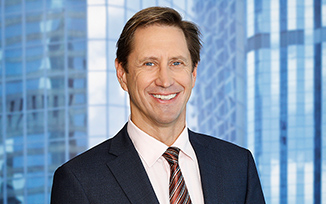Connecting People to Business Performance

Periodically, business owners will conduct staff reviews and reward good performance with salary increases. These reviews provide an opportunity to align employee focus with customer and business interests, ensuring a business’s people understand what they are required to do and how it is to be done. When staff stagnation occurs (i.e. minimal employee turnover) and/or regular alignment discussions are not maintained, staff costs relative to business performance can become less than optimal. The following considers the changing employee dynamics in the Pharmacy industry against the backdrop of increased competition and decreasing profitability.
Based on the 13 financial years of data graphed below, the Pharmacy industry’s total wage growth represents a combination of inflation, award increases and the effects of Pharmacist supply and demand. Specifically, for the six years from 2005 to 2010 wages grew by 35%. For the subsequent six year period from 2011 to 2016, wage costs only increased by 5.5%. And in the 2018 financial year the average Pharmacy’s total wage costs actually decreased by 2%. While it is an unusual trend compared to other industries, further analysis must be done to consider how this has occurred and whether better customer and business outcomes are resulting.
Upon further review of the data in table 1 below, it can be seen that actual wages per employee have not reduced (increase in cost per Full Time Equivalent (FTE)) - only the total employee hours have reduced (decreasing number of FTE’s). Based on the PP client base averages, FTE numbers peaked in FY2011 at an average of 12.
Therefore, it appears that in recent years pharmacies have been learning to do “more with less” through investing in labour saving efficiency investments (eg robots, improved layouts etc) and/or just responding to business pressures (reduced profit, increased competition etc).
Table 1
During the period the data has been collected, we have advocated from a commercial perspective (while industry groups concurrently advocated from a professional services perspective) for an increase to total pharmacist hours to support customers through a health solution journey while also delivering Government and patient funded services. The above graphs highlight the ongoing transformational cost shift that has occurred in the last two years in particular (i.e. lower total store wage costs despite increasing wages per FTE due to a decrease in number of FTE’s).
Overlaying the data from average retail sale and average retail items per customer (refer table 2 below) on the previous table’s wage data reveals an improved retail efficiency from 2014 through 2016. However, after 2016 the cost per FTE increases while the average retail sale declines to a position where average retail items per customer in 2018 fall to less than that being achieved in 2014. While this decline has been offset by PPI income growth it has unfortunately not been sufficient to offset the decline in retail performance.
For many businesses this trend has been obscured by improved dispensary profitability from the AHI, risk share component and indexation of dispense fees during the same period. While positive in one sense it has for many masked rising wages to GP$ relative to a declining retail performance. So what are the potential causes and fixes?
Table 2
The default view is that competition and broad economic conditions have caused the retail deterioration. While true these influences are uncontrollable at a Pharmacy level. Potentially more can be learned from reviewing the responses to these conditions and the level of success being achieved. Analysis of the PP client averages reveal the following:
-
Pharmacies have increased the number of higher paid professional staff and reduced the number of Pharmacy assistant hours without increasing retail sales.
-
It appears pharmacies have become more ‘self-select’ in the front of shop leading to middle health (professional service categories) being under-serviced.
-
Inefficient processes/procedures mean increasing service based income has required increased professional costs.
-
While staff are expected to manage a customer through a total health solution (i.e. by increasing number of items and service income per patient visit), the results indicate it is not being achieved. Hence a potential disconnect between technical skills and communication/people management expertise.
While it is true that some pharmacies have made changes in the dispensary layout and design to manage pharmacists out of the dispensing process, efficient dispensary systems (robots and other shelving/layout solutions) are only part of the opportunity. If the intent is to merely redeploy the existing dispensing pharmacist/s to the front shop it won’t work. The skillsets are different and the pay rates should differ for the same reason.
A dispensing (processing) pharmacist is different to a customer facing pharmacist. The former can only make gains through being more efficient. The latter can influence the customers spending and behaviour through relevant health solution outcomes for the customer.
With an increasing amount of income for services over the next 12 months (the last year of the 6th Agreement) and likely increases under the 7th Agreement, it is imperative that the service delivery model continues to evolve to maximize both revenue and relevance into the future.
The evidence points to the fact that highly skilled staff are currently available in pharmacy to deliver the required outcomes. However, many are only halfway there. There is an efficiency and retail relevance ‘gap’ because the higher paid staff are not focusing on the profit generating activities and must be bridged to avoid the trend towards the deterioration of net profit. Your opportunity is to understand what are they actually doing to achieve this?





